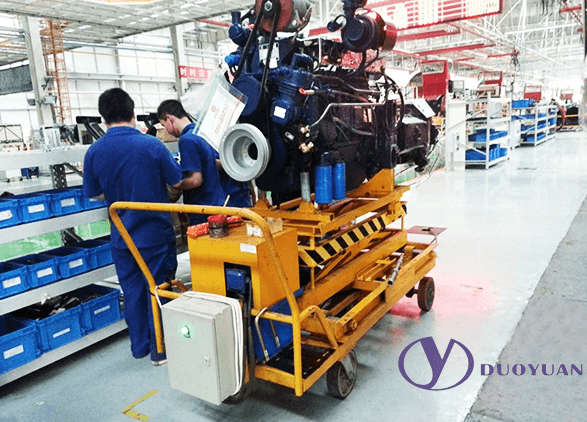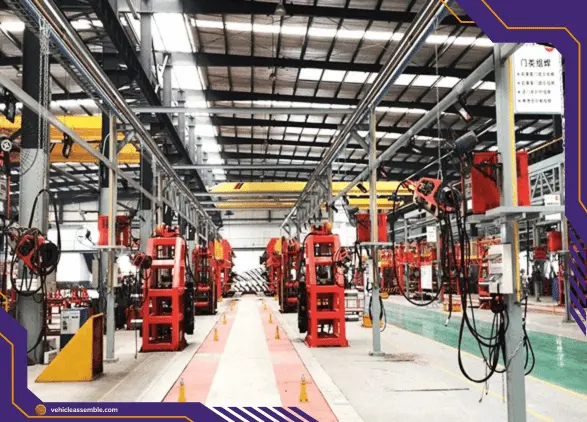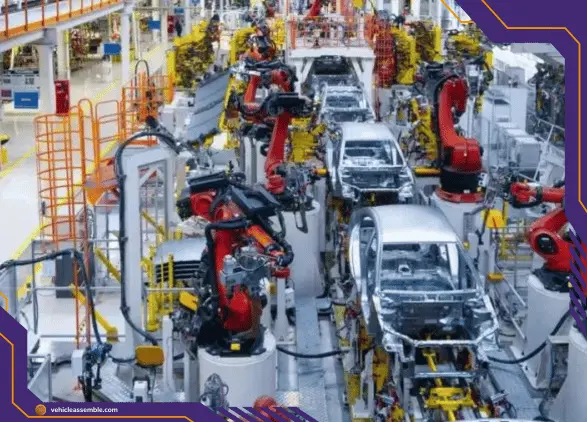Description
An In-depth Exploration into the Realm of Engine Installation Carts in Car Assembly Lines
Get the latest insights about the Engine Installation Cart, a vital component of modern car assembly lines. Discover how these vehicles contribute to an efficient and speedy production process.
The term 'Engine Installation Cart' may not ring a bell for many. Still, if you're acquainted with the automobile manufacturing industry, you'll know it's an integral piece of the production puzzle. These mobile units play a vital role in the assembly line, particularly during engine installation. This in-depth article will take you on a journey through the world of Engine Installation Carts in the context of car assembly lines.
Engine Installation Cart: An Unseen Hero in Car Manufacturing
Engine Installation Carts are the unsung heroes of the automobile production world. As their name suggests, these devices transport and install engines into the vehicles' chassis during the assembly line process.
Engine Installation Carts aren't just mere transportation devices; they're designed to hold and maneuver the engines with precision, ensuring the smooth installation of the machine into the vehicle's body. They are an indispensable asset, contributing to the efficiency and success of the car manufacturing process.
Understanding the Design and Functionality of an Engine Installation Cart
The design of an Engine Installation Cart is fundamentally based on functionality and ease of use. They're typically equipped with heavy-duty casters for easy movement and durability. Engine cradles or mounts are attached to the cart to hold the engine in place. These mounts can be adjusted according to the size and type of the machine, thus adding a layer of versatility to the cart.
The cart also features controls for the precision placement of the engine during installation. These controls can adjust the engine's height, angle, and position, facilitating an exact and efficient installation process.
The Role of Engine Installation Carts in the Assembly Line
An assembly line is a hub of activity where speed, efficiency, and precision are paramount. Engine Installation Carts are pivotal in this environment, transporting engines from one station to another and facilitating their installation.
The carts are maneuvered to the vehicle body, and using their precision controls, the engines are accurately installed into the chassis. The process reduces the time and effort required for engine installation, boosting overall assembly line efficiency.
Benefits of Using Engine Installation Carts in Car Assembly Lines
Engine Installation Carts provide several significant advantages to the assembly line process. The carts reduce the manual labor required, minimize potential damages to the engine during transportation, and ensure a precise installation. All these factors enhance the productivity and effectiveness of the car manufacturing process.
Engine Installation Cart and Its Contribution to Worker Safety
Safety is a critical concern in any production environment. Engine Installation Carts contribute to the safety of workers in the assembly line by minimizing heavy lifting and reducing the risk of accidents. By allowing precise control over engine installation, they also reduce the chances of mishaps that could occur due to human error.
Innovations in Engine Installation Cart Designs
In recent years, there have been numerous advancements in the design and functionality of Engine Installation Carts. Many of these innovations aim to improve the carts' efficiency, ease of use, and safety. Some examples include incorporating more advanced control systems, ergonomic designs, and integration of automation technologies.
The Impact of Automation on Engine Installation Carts
The rise of automation technologies has impacted various aspects of car manufacturing, and Engine Installation Carts are no exception. Modern carts often feature automated control systems, allowing for more precise and efficient engine installation. This trend towards automation is set to continue, shaping the future of Engine Installation Carts in car assembly lines.
Maintaining and Servicing Engine Installation Carts
Regular maintenance and servicing of Engine Installation Carts are vital to ensure their longevity and optimal performance. Routine inspections should be performed to check for any signs of wear and tear or damage. Necessary repairs and replacements should be done promptly to avoid disruptions in the assembly line.
Future Trends in Engine Installation Carts
With the continuous evolution of the automobile industry, the future of Engine Installation Carts holds promising advancements. Integration of more advanced automation technologies, development of more versatile and adaptable designs, and incorporation of sustainability practices are just a few trends to look out for.
FAQs
What is the primary function of an Engine Installation Cart in a car assembly line?
The primary function of an Engine Installation Cart is to transport and install engines into the vehicles' chassis during the assembly line process.
How does an Engine Installation Cart contribute to worker safety?
Engine Installation Carts contribute to worker safety by reducing the need for heavy lifting and minimizing the risk of accidents during the engine installation process.
What are the benefits of using Engine Installation Carts in car assembly lines?
The benefits of using Engine Installation Carts include reduced manual labor, minimized potential damage to the engine during transportation, precise engine installation, and improved assembly line efficiency.
How has automation impacted Engine Installation Carts?
Automation has allowed for more precise and efficient engine installation, with many modern carts featuring automated control systems.
What does the future hold for Engine Installation Carts?
The future of Engine Installation Carts will likely see further integration of automation technologies, more versatile and adaptable designs, and increased emphasis on sustainability practices.
Conclusion
Engine Installation Carts play a significant role in the efficiency and productivity of car assembly lines. Their role extends beyond merely transporting engines; they're instrumental in precise engine installation and worker safety and are the cornerstone of the entire car manufacturing process. As the automobile industry continues to evolve, so will the capabilities and design of Engine Installation Carts, further cementing their indispensable role in this dynamic industry.





